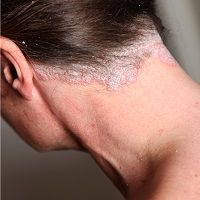Article
Facial Moisturizer with SPF35 Formulated for Skin of Color is Clinically Supported
Author(s):
The moisturizer was designed to address concerns regarding the suitability of sunscreens for individuals with skin of color and show the importance of "aesthetic elegance” to increase sunscreen utilization.
DiAnne Davis, MD

Investigators evaluated the perception and product coverage of a specially formulated daily facial moisturizer (DFM) with SPF35 in individuals with skin of color. The moisturizer was designed to address concerns regarding the suitability of sunscreens for patients with skin of color.
According to data from the 2022 Fall Clinical Dermatology Meeting this week, typical sunscreens have been described as “chalky”, “ghostly”, and “greasy” with “white residue and white cast.” These perceptions lead to the hesitance of sunscreen use in this population and previous data have demonstrated the importance of "aesthetic elegance” to increase sunscreen utilization.
Assessing the Suitability for Skin of Color
DiAnne Davis, MD, North Dallas Dermatology Associates, and investigators presented findings from the single-center, 7-day, open-label study.
Participating patients were healthy adult women with self-perceived sensitive skin and Fitzpatrick Skin Type (FST) IV-VI, meaning they fell into one of the following descriptions: skin burns minimally and always tans well to moderately brown (IV), skin rarely burns and tans profusely to dark (V), skin never burns, is deeply pigmented, and is least sensitive to UV exposure who volunteered (VI).
As part of the investigation, after cleansing their face, patients applied the formulated daily moisturizer with SPF35 to their entire face once a day and then reapplied as needed. On the first and last day of the study period, patients completed a self-assessment with questions about product attributes, skin feel, cosmetic acceptability, and overall liking of the product.
Clinical photography served as another form of assessment. Pictures of the 32 patients who completed the study were taken before and after moisturizer application on day 7 using VISIA CR under standard and ultraviolet (UV) lighting. The mean age of the population was 44 years.
Reviewing the Results
The clinical photos showed that under standard lighting, the moisturizer was compatible with individuals’ skin tone, making it difficult to differentiate the shots taken before and after application. It also displayed visible support for the results from the self-assessment questionnaire on product attributes.
According to the results, the daily facial moisturizer was viewed as cosmetically elegant. On the first day, 96.7% were in agreement about the ease of application, 90% reported soft skin following use, 86.7% described their skin as hydrated and the product felt lightweight and non-greasy.
On day 7, 93.7% of patients reported no white residue was visible on skin and that the product went on easily and absorbed well, with 87.5% agreeing that it blended seamlessly into their skin–proving the suitability on skin of color. Most stated that they would continue using the product and recommend it to someone else (90.6%).
Investigators stated that responses were consistent among patients with normal, oily, or combination skin and no adverse events were reported.
“Formulating sunscreen products compatible with skin of color can help to increase adherence and further protect the skin from UV damage,” the poster stated. “This study shows the importance of creating a sunscreen suitable for all skin tones.”





